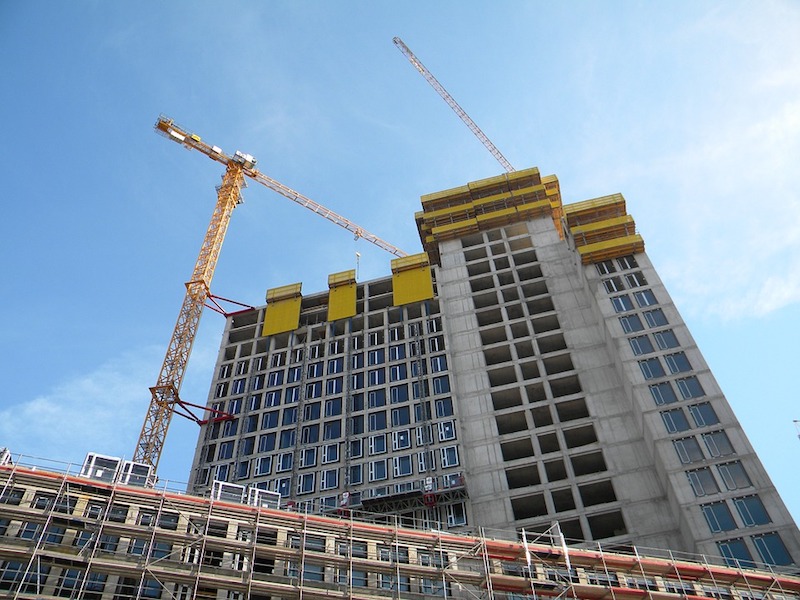Coming off a record-setting year for the nonresidential construction industry (more than $760 billion was spent on new construction and renovation work nationwide last year), AEC firm leaders should be brimming with confidence over the growth potential for their firms heading into 2019. The arrow is pointing up for nearly all building sectors, construction backlogs remain healthy, and architecture firms continue to see strong demand for their design services, according to AIA and ABC data.
Yet despite the positive indicators for the market, AEC professionals remain largely cautious when it comes to growth prospects for 2019. In October, BD+C surveyed 314 readers about their thoughts on a variety of issues: materials prices, bid prices, obstacles to growth, emerging opportunities, etc. Only slightly more than half (56.0%) of industry professionals expect higher revenue for their firm in 2018 compared to last year. More surprisingly, 13.4% are forecasting a decrease in revenue.
And their forecast for 2019 isn’t much rosier: 54.7% expect revenue to increase, 8.7% call for a drop, and 36.7% predict flat revenue this year. This is a markedly different sentiment than last year’s respondents, who were much more upbeat with their forecasts for the upcoming year: 62.0% predicted revenue to rise and only 6.1% called for it to drop.
When asked about their top concerns for 2019, the largest number of respondents cited “general economic conditions” (52.7%) as a key issue, followed by “competition from other firms” (41.0%) and “price increases in materials and services” (39.0%). In fact, nearly 90% of respondents anticipate construction materials prices to rise in 2019. That’s up from 86% in last year’s survey of BD+C readers.
See Also: And then there were two: HQ2 sites, in hindsight, seemed obvious
To help keep their project pipelines full through 2019, AEC firms are focusing on a number of business development strategies heading into this year. Selective hires (44.1%) and marketing/public relations efforts (42.2%) top the list, followed by investments in technology (39.0%), staff training/education (35.9%), and new services/business opportunities (29.2%).
Healthcare facilities and multifamily housing head the list of the hottest sectors heading into 2019, according to survey respondents. More than half (52.5%) indicated that the prospects for healthcare/hospital work were either “excellent” or “good” for 2019; 52.4% said the same for multifamily housing work. Other strong building sectors: senior/assisted living facilities (51.9%), office interiors/fitouts (46.9%), industrial/warehouse buildings (42.7%), hotel/hospitality developments (39.7%), university facilities (38.2%), government/military buildings (37.5%), and office buildings (37.4).
Related Stories
| Aug 11, 2010
Rafael Vinoly-designed East Wing opens at Cleveland Museum of Art
Rafael Vinoly Architects has designed the new East Wing at the Cleveland Museum of Art (CMA), Ohio, which opened to the public on June 27, 2009. Its completion marks the opening of the first of three planned wings.
| Aug 11, 2010
Suffolk breaks ground on colorful charter school in Boston
Suffolk Education has broken ground and began renovations and construction of a new $39.6 million facility to house the Boston Renaissance Charter Public School. The Suffolk team is renovating an existing, three-story mill building and warehouse in the Hyde Park section of Boston, Massachusetts, and constructing a 20,000 square-foot addition.
| Aug 11, 2010
McCarthy, Skanska among nation's largest healthcare contractors, according to BD+C's Giants 300 report
A ranking of the Top 50 Healthcare Contractors based on Building Design+Construction's 2009 Giants 300 survey. For more Giants 300 rankings, visit http://www.BDCnetwork.com/Giants
| Aug 11, 2010
Turner, Webcor, Hensel Phelps top BD+C's list of the 75 largest green contractors
With more than $3 billion in value of construction put in place for green buildings in 2008, Turner Construction tops BD+C’s ranking of the nation’s 75 largest green contractors, published as part of the Giants 300 report. Webcor Builders ($2.27 billion), Hensel Phelps Construction ($2.10 billion), The Whiting-Turner Contracting Co. ($1.97 billion), and Clark Group ($1.89 billion) round out the top five.
| Aug 11, 2010
Free waterproofing and roofing resource handbook available from American Hydrotech
American Hydrotech is now offering a waterproofing and roofing resource handbook for all architects and design community professionals. Topics include sustainable design, waterproof product specification, and proper installation techniques for use by building professionals in designing and waterproofing roof decks, plazas, vertical foundations, reflecting pools, and green roof applications.
| Aug 11, 2010
Perkins Eastman designing next gen trading floor for NYSE EURONEXT
The New York office of international design and architecture firm Perkins Eastman has been commissioned by NYSE Euronext to design the “next generation trading floor” through extensive renovations to the floor’s Main Room, replacing traditional broker booths with modern trading desks, new screens and workspaces, and a new network while creating a unified trading environment.
| Aug 11, 2010
National Association of Governors adopts AIA policy of reaching carbon neutrality in buildings by 2030
As part of their comprehensive national Energy Conservation and Improved Energy Efficiency policy, the National Association of Governors (NGA) has adopted the promotion of carbon neutral new and renovated buildings by 2030 as outlined by the American Institute of Architects (AIA).
| Aug 11, 2010
World-Class Revival on Utah’s Capitol Hill
Since 1916, the Utah State Capitol building has served as the foundation of Utah’s government, housing the state legislature operations as well as the offices of the governor, attorney general, and treasurer. But after decades of wear and tear and numerous short-sighted modernization attempts, Utah’s rock was on the verge of crumbling.







